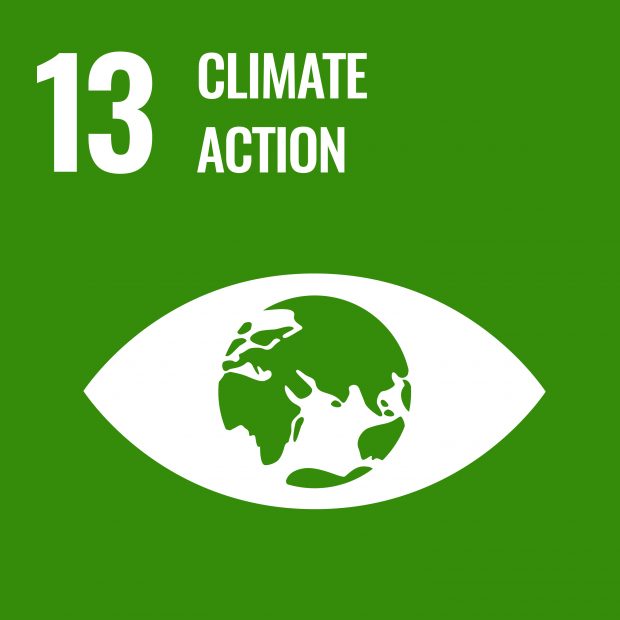
Even though digital tools – both professional and personal – are essential to everyday life, they can be harmful for the environment. Despite being seen as ‘virtual’ by many, the digital sector does increase the planet’s carbon balance by contributing to 2% of greenhouse gas emissions – a figure that is expected to double within 3 years. Digital technologies could help reduce global carbon emissions by up to 15% – or one-third of the 50% reduction required by 2030.
Your ICT footprint
When it comes to the world of work, the picture is equally eye-opening. Through research, we’ve identified that the annual environmental footprint of a user of a company’s IT system is roughly equivalent to the air pollution of a 1,926 mile car ride (around 788kg of CO2), the energy usage of charging 100,540 smartphones (about 1,520 kWh of energy), and 428 showers (23,555 litres of water).
But in the Department for Environment, Food and Rural Affairs (Defra), our consumption per user is less than half of these figures. So how can the digital carbon footprint be controlled?
Sustainable procurement at Defra
Defra’s process for controlling and measuring carbon footprint starts with procurement of information and communication technology (ICT).
We opt for suppliers that demonstrate sustainability both in terms of their own practices and by those of their suppliers. These include monitoring and reducing greenhouse gas emissions and using renewable or green energy, increasing resource efficiency, reducing and minimising waste, and reducing energy and fuel consumption.
Measuring of ICT carbon emissions
Being able to accurately assess the impact of the ICT that we use is the first step towards reducing carbon emissions. It will allow us to provide a trusted and tested baseline from which we could then identify the projects and activities that can reduce our future emissions. When developing a digital and sustainability strategy, organisations should make it SMART – specific, measurable, achievable, realistic and timely. To do that, they need to have a clear understanding of the impact of the different technologies they use.
The direct environmental impacts derive from:
- laptops, PCs and tablets
- networks, such as LAN, WLAN
- phones and telecoms infrastructure, such switchboards
- TVs and projectors
- data centres
- printers and paper
- Information and Communication Technology waste
- ICT-related travel, such as engineers providing support (this is optional depending on the size of the impact and how organisations report on travel and other aspects of their carbon footprint)
It is critical that businesses not only consider the built-in energy efficiency of their hardware – typically measured as performance per watt – but also leverage technologies that provide the intelligence needed. This includes products with power and thermal sensors on critical components, which mean that hardware can be monitored remotely in real time.
When paired with tools that allow a user to see historical and real-time utilisation levels and power consumption, this makes it possible to improve Power Usage Effectiveness (PUE), perhaps by operating IT infrastructure with the least amount of ancillary resources like cooling and backup systems. Ultimately, these solutions avoid wasted energy, cost, effort and environmental impact by driving efficiencies into IT infrastructure.
Using technology to achieve net zero emissions
Net zero simply means that any emissions are balanced by absorbing an equivalent amount from the atmosphere. It is possible to reach net zero using technology available today. While solutions are interlinked and complex, key elements include:
- reducing how much people travel within the technology sector and using ICT tools as alternatives to travel across all industry
- reducing energy demand and replacing it with renewable and carbon neutral sources
- adopting standards for buildings e.g High Passivhaus
- improving and monitoring temperature controls
- balancing demand and supply, by using smart appliances and energy storage solutions and self-generation of energy
For example, in Defra and through our supplier we’ve identified that ‘on demand’ cloud services (those which are used only when required rather than being available all the time as they would be with our own data centres) produce less carbon emissions when we make each virtualised service available only when it’s needed, thus consuming less energy. In addition, through the use of more energy-efficient data centre environments.
Getting started
Formulating the specific methodology for carrying out the initial assessment of the impact that your ICT has will be a significant task. However, once this is complete, the process of monitoring and reducing your footprint should be more straightforward.
In addition to developing mechanisms for reporting and calculation, engaging stakeholders and driving action to make improvements is a critical activity for every organisation.
We’re also keen to read your examples of best practice so we can all continue to learn from each other. In line with that ethos, we welcome your input and feedback into our work so please do add your comments and questions in the comments section below. If there’s more we can do to help, please let us know.

Leave a comment